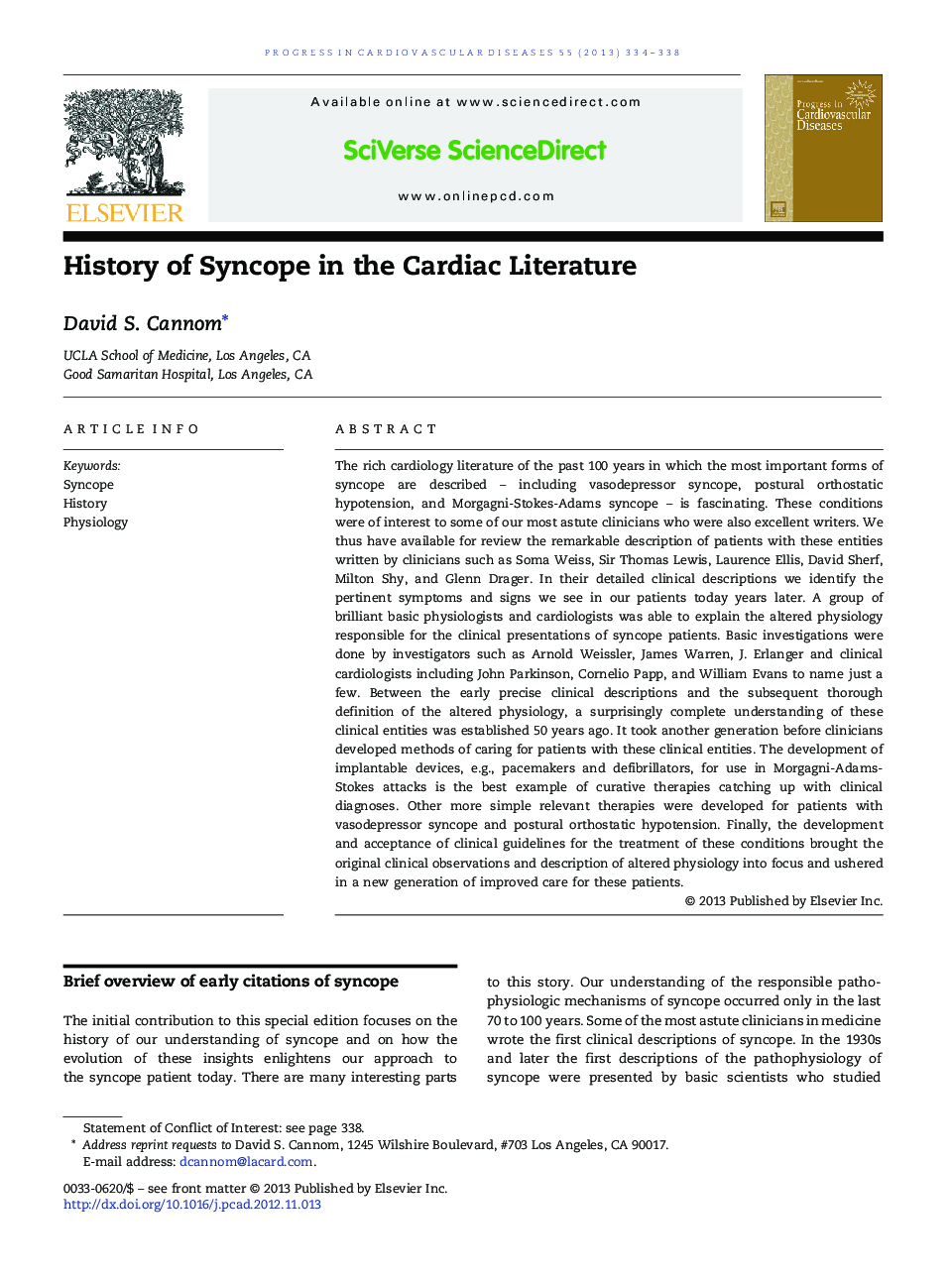| Article ID | Journal | Published Year | Pages | File Type |
|---|---|---|---|---|
| 3006487 | Progress in Cardiovascular Diseases | 2013 | 5 Pages |
The rich cardiology literature of the past 100 years in which the most important forms of syncope are described – including vasodepressor syncope, postural orthostatic hypotension, and Morgagni-Stokes-Adams syncope – is fascinating. These conditions were of interest to some of our most astute clinicians who were also excellent writers. We thus have available for review the remarkable description of patients with these entities written by clinicians such as Soma Weiss, Sir Thomas Lewis, Laurence Ellis, David Sherf, Milton Shy, and Glenn Drager. In their detailed clinical descriptions we identify the pertinent symptoms and signs we see in our patients today years later. A group of brilliant basic physiologists and cardiologists was able to explain the altered physiology responsible for the clinical presentations of syncope patients. Basic investigations were done by investigators such as Arnold Weissler, James Warren, J. Erlanger and clinical cardiologists including John Parkinson, Cornelio Papp, and William Evans to name just a few. Between the early precise clinical descriptions and the subsequent thorough definition of the altered physiology, a surprisingly complete understanding of these clinical entities was established 50 years ago. It took another generation before clinicians developed methods of caring for patients with these clinical entities. The development of implantable devices, e.g., pacemakers and defibrillators, for use in Morgagni-Adams-Stokes attacks is the best example of curative therapies catching up with clinical diagnoses. Other more simple relevant therapies were developed for patients with vasodepressor syncope and postural orthostatic hypotension. Finally, the development and acceptance of clinical guidelines for the treatment of these conditions brought the original clinical observations and description of altered physiology into focus and ushered in a new generation of improved care for these patients.
